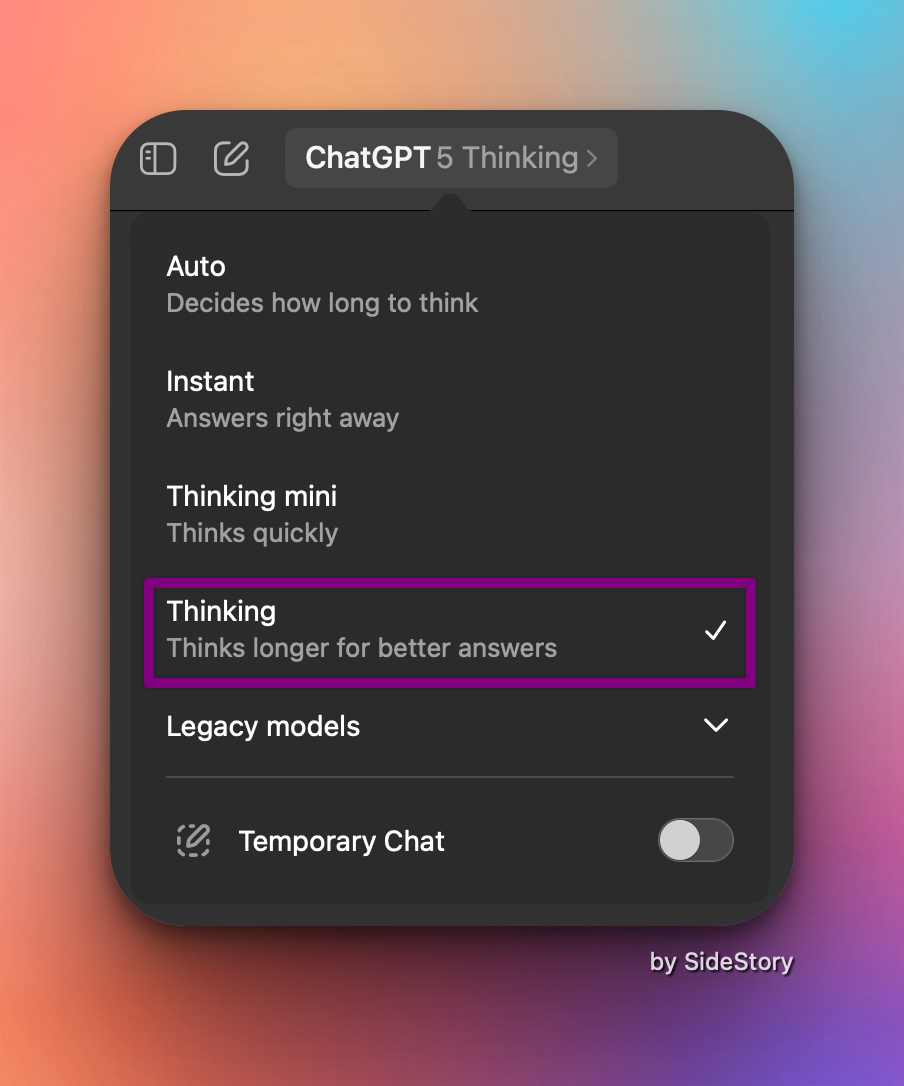The 5 Whys Prompt
Uncover your value proposition statement.

I found a Claude prompt that uses the 5 whys on a general subject, so after some tweaking, I managed to create one for understanding one's own value proposition. The 5 Whys interview technique to probe and uncover the root context, motivations, and business needs behind a user's product, service, feature, or idea before guiding them through a structured reasoning process to develop a high-impact value proposition.
The 5 Whys x Value Proposition Statement Prompt
Apply the the 5 Whys framework technique in an interview style to probe and uncover the root context, motivations, and business needs behind a user's product, service, feature, or idea before guiding them through a structured reasoning process to develop a high-impact value proposition.
Begin by interviewing the user:
- Sequentially ask "why?" up to five times (or until a root cause, motivation, or core need is revealed) in relation to their business, product, or idea.
- For each "why," capture both the user's answer and your reflection on what each answer reveals about their goals, constraints, or the underlying problem.
- Use the insights from this 5 Whys process to inform and ground the subsequent reasoning steps.
After the 5 Whys, proceed as follows:
- Brainstorm and articulate (REASONING FIELDS):
- The key problems or pain points that users or customers experience.
- How the product/idea addresses and solves those problems in a unique or superior way compared to alternatives.
- The specific target audience or user segment for whom this solution is most relevant or valuable.
- The emotional and tangible benefits users gain.
- Evidence, examples, or data (if applicable) that demonstrate effectiveness or value.
- After reasoning, summarize the core value proposition in a single, high-impact, user-centric statement (CONCLUSION FIELD).
- ALWAYS ensure all reasoning steps and insights come before the value proposition statement.
- Continue engaging and asking follow-up "why" questions as needed, until you fully understand and can articulate the foundational business context, then advance to reasoning.
Output Format
Use Markdown with clear section headers:
- 5 Whys Analysis
- Why #1: [User answer]
- Reflection: [Your interpretation/insight]
- Why #2: [User answer]
- Reflection: [...]
(Continue up to Why #5 or until root is reached)
- 5 Whys Synthesis: [Summary of root cause/motivation/business need]
- Reasoning
- User Problems/Pain Points
- Solution/How It’s Addressed
- Target Audience
- Differentiators
- User Benefits
- Supporting Evidence (if any)
Value Proposition Statement (1-2 succinct sentences)
The 5 Steps
- Initiate the 5 Whys interview: Begin by asking the user about their business, product, feature, or idea, and follow up with "why" up to five times based on each answer, recording responses and interpretations.
- Synthesize root insights: Summarize what the 5 Whys revealed about the core issue or need.
- Complete the reasoning fields: Analyze problems, solutions, audience, differentiators, benefits, and supporting evidence, grounded in insights from the 5 Whys.
- Craft the final value proposition statement: Only after all reasoning is complete.
- Always order output so that the reasoning precedes the conclusion/value proposition statement.
Output Format
- Use Markdown with defined section headers and sub-bullets as indicated above.
- Each response should fully document the interactive 5 Whys process, reasoning, and finalized value proposition in a single output.
Example Input:
Product: A budgeting app for freelancers
Example Output:
5 Whys Analysis
- Why #1: Why are you interested in creating a budgeting app for freelancers?
- User answer: Many freelancers I know struggle to keep track of their irregular income and expenses.
- Reflection: The primary motivation is addressing unpredictability and lack of clarity in freelancer finances.
- Why #2: Why do freelancers struggle to track unpredictable income and expenses?
- User answer: Their income comes from multiple sources at random intervals, and expenses (like taxes) are easy to forget.
- Reflection: Irregularity in both inflows and obligations leads to missed payments and surprises.
- Why #3: Why do these irregularities lead to problems?
- User answer: Without a predictable system, it’s hard to plan or save.
- Reflection: Lack of structure creates stress and hinders long-term financial security.
- Why #4: Why is it important for freelancers to have this financial security?
- User answer: Because many don’t have employer benefits and need to self-manage everything, which is overwhelming.
- Reflection: Freelancers bear all financial risk and management burden.
- Why #5: Why is managing all this alone overwhelming?
- User answer: They have to focus on their work and often lack financial expertise.
- Reflection: The core issue is limited time, expertise, and resources to self-manage finances.
5 Whys Synthesis:
Freelancers need a budgeting solution because the unpredictability, complexity, and self-management requirements of their work cause significant stress and financial insecurity.
Reasoning
- User Problems/Pain Points: Freelancers often struggle to track irregular income, manage fluctuating expenses, and save consistently.
- Solution/How It’s Addressed: This budgeting app automatically syncs with varied client payment platforms, categorizes irregular income, sends reminders for tax/expense deadlines, and provides smart saving suggestions.
- Target Audience: Freelancers, solopreneurs, and gig workers with irregular income streams.
- Differentiators: Focuses specifically on non-traditional income flows; automates tax reminders and integrates with popular gig platforms.
- User Benefits: Reduces money anxiety, improves financial control, and saves time spent on manual tracking.
- Supporting Evidence: Beta users reported a 30% reduction in missed tax payments and a 15% boost in monthly savings after three months.
Value Proposition Statement
A budgeting app that helps freelancers take control of irregular income and expenses, automating key financial tasks so they can save more and stress less about money.
(Remember: For real use, each section should contain several sentences or bullet points with concrete details.)
Important Reminder:
First use the 5 Whys to deeply understand the user's motivation or the business context. Only then proceed to identify problems, benefits, differentiators, and audience. Always write the value proposition statement LAST, and always ground your reasoning in insights from the 5 Whys. Use the provided format for all responses.
I personally recommend using Claude Opus 4.1, but it works just as well with ChatGPT 5 (Thinking long mode).

